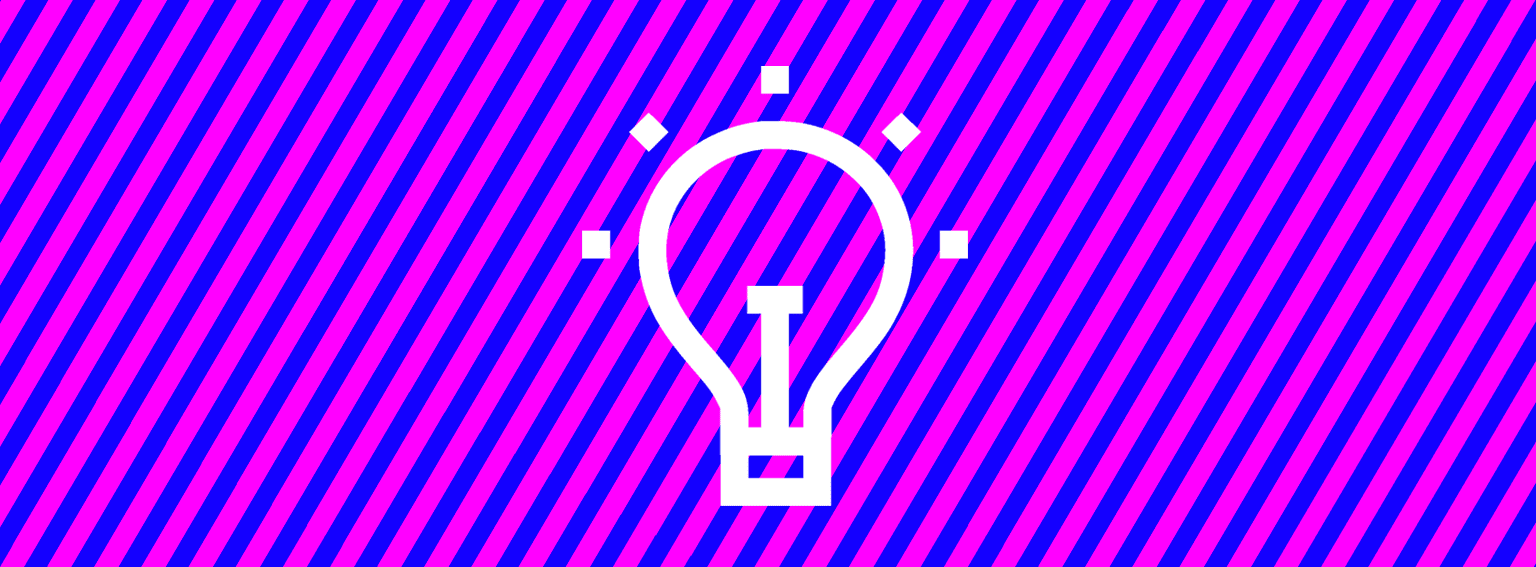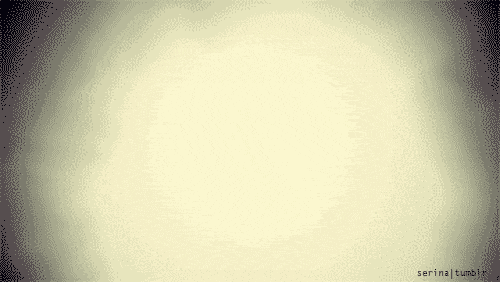





Articles
Articles
News, views and our latest work
Demystifying Creativity
Everyone who has chosen a career in marketing likes to think they’re creative. But only a few truly understand how creativity works. In this article, we’ll look under the hood of creativity to reveal what’s important and share useful techniques on how to come up with great ideas quickly.
Department of Social Protection
People who cheat the Welfare literally cheat us all. But for some reason, it's seen as a victimless crime. Find out how we tackled this issue and raised the debate on welfare fraud.

The Future of Remote Working in Advertising
The Future of Remote Working in Advertising
The evolution of the workplace
After starting out in advertising in my early 20’s part of the draw was being around so many creative and talented people and not to mention the after-work drinks when you have no other commitments other than to ‘work to enjoy’.
There was such a desire to get my first taste of the real world in a creative environment. It was exactly what I wanted…and I can only imagine that there are thousands of people who were and are, like me. But after the 2 years we’ve had, we can already see there will be a permanent place for remote working in the marketing and advertising sphere so how will the youth of today experience their first year in advertising? Not just the work but the full experience – has that experience been taken away from them for longer than just the pandemic? They will miss out on so much and find becoming engrained in agency life or one of the gang will become so much harder. We also have to think of creative talent. Great talent is often not just attracted to the work produced but the lifestyle, the social aspect of the industry, the teamwork and mentoring. How will agencies show off and attract new creative people with more than just their recent work?
With all these elements needing to be navigated, it will be a long time before we have it all figured out – the marrying of the new work-life balance that people are experiencing with remote working and the long hours of agency office life.
Necessity is the mother of invention.
We now know that remote work looks to be a huge part of the future. But how does this trajectory function for creative work and creative teams?
A survey undertaken in late 2020 sighted that ‘missing social interaction with work colleagues’ was identified as the number 1 negative challenge experienced to date by 54% of those working from home. So, does working from a remote location instead of boosting creativity actually sap you from it…due to a lack of social relationships and unexpected interactions?
Those in advertising know (or think) that teamwork is integral to producing good creative work…2 or 3 creatives being hidden away in a room day after day for weeks on end with thought starters and propositions of insightful nuggets often prompt the best work and have been the only way of working for many agencies. And it’s not just the creatives, their support and people around them (account management, strategist, producer, designer, finished art etc.) help them achieve the end campaign. And once one brief is complete is straight on to the next…
But this process of working can sometimes entail long hours, and late nights, leading to tired and stressed teams.
A recent survey revealed that 60% of people reported work-life balance as a strong benefit of working from home. Does this pose the question, could happier employees lead to more productive work and quicker outputs?
There are times when the home, or the coffee shop (if you can manage these places without distraction), is a much better place to work than the office. There are types of creative work where being in your favourite room, setting up your desk by a window to allow in some natural beauty, or having your pet beside you may provide a hidden boost to humanity’s creative powers. JK Rowling wrote her first three books sitting in coffee shops in Edinburgh… “It’s no secret that the best place to write, in my opinion, is in a café. You don’t have to make your own coffee, you don’t have to feel like you’re in solitary confinement and if you have writer’s block, you can get up and walk to the next café while giving your batteries time to recharge and brain time to think.”
Further to this, creativity can require breaking down briefs, research, and disassembling structured information to be able to see it in a new light. The structured nature of the office experience may itself kill creativity and perhaps the very nature of remote work supports these creative ways of thinking.
I guess we can’t get into how each person’s work from home ‘space’ can differ, and some will obviously be better spaces for producing creative work, i.e. the physical spaces in which we work can set a creative tone, but many employees are finding themselves in a more relaxed environment thus better able to take a step back and consider new approaches to briefs and getting that creative spark.
Of course, there are always two sides and there are barriers to producing creativity remotely such as communication can suffer significantly, spontaneity is often lost, and lack of interpersonal relationships makes the work less stimulating. And we also know that relationships are so important in agencies as teamwork is so integral, that these relationships need to stay strong so that trust is maintained. The idea of place creates a sense of belonging to each other and that cultural connectivity. So, collaborative and social meet-ups are important to refill that sense of place that may now be lost with not being in a physical office as much but not everyone needs them all the time. And there are ways to collaborate virtually for work, as has been already proven in the many other disciplines, and will only get better.
So, we believe the potential barriers we’ve highlighted can be fixed with the right attitude, right leadership, right digital tools, and the flexibility of those involved. So, if we’re right, how can advertising agencies make this virtual work of collaborating hugely successful? Honestly, I think the future will come to be that there will be 2/3 days a week of remote working and the other days will allow creative teams to come together in-person for activities like ideation and brainstorming but also to build their relationships and soak up that social interaction we all need.
But when this comes to be and if we are right that there will be this split between the office and working from home, how are our clients going to react or will they all be doing the same? Do we coordinate meetings and presentations in the same way – when the full team need to be there, we are there? In reality pre-Covid, full teams only came together when there was something to review or a presentation to rehearse, or a meeting to attend. The day-to-day work was and can be done from anywhere so… coordination will become a new skill, and potentially resourcing and coordinating teams will develop into the toughest and busiest job in the agency. The world is defining what our post-restrictions realm will look like but it's clear that there are no best practices or existing solutions. We do know that how we communicate and stay productive post-Covid is a business reality that needs to be faced now. Let’s take the ‘all in this together’ sentiment forward with colleagues and clients and truly aim to work together to make flexible work, work for everyone.

Demystifying Creativity
By Tim Britnell, Founder and Creative Strategist/Director @ Creed
Demystifying Creativity
By Tim Britnell, Founder and Creative Strategist/Director @ Creed
Marketing is an exciting and creative industry to be in. In this article we'll reveal the thinking behind creativity and share useful techniques on how to come up with great ideas quickly.
The difference between an idea, a concept and an execution
Once you understand the differences, it will makes it easier for you to judge or come up with great creative work.
So when it comes to advertising creativity:
1. The idea is the thing you want to say.
2. The concept (sometimes called the big idea) is the overarching thought.
3. The execution is how you express the concept.
Let's take Guinness as an example:
1. The idea – Guinness and its drinkers have depth of character.
2. The concept - Guinness is Made of More.
3. The execution – think back to the wheelchair basketball ad, that features six guys playing wheelchair basketball revealing in the end that only one of them actually needs a wheelchair. Then after the final buzzer, the group heads into a pub for a few post-game pints. These guys are Made of More just like Guinness.
Form Follows Function
Modernist architects of the early 20th century and the Bauhaus movement revolutionised design thinking as we know it, with “Form Follows Function”. The principle is that the shape of a building or object should be primarily based upon its intended function or purpose.
This is equally true in marketing. That what we create should be based upon the outcome we desire. This may seem simplistic but all too often we get caught up in cross agency meetings, media schedules, budget issues and the new “must have” social media platform, that sometimes we forget what the end goal is.
Making an impact
Dave Trott wrote in 2014 that in the UK “£18.3 billion is spent on all forms of advertising and marketing every year. We know that 4% is remembered positively, 7% is remembered negatively, and 89% isn’t noticed or remembered. So that’s roughly £17 billion…” wasted.
Think about that. Only 4% of all marketing is working properly. And only 11% is getting noticed at all. Marketers are not getting their bang for their buck. They’re falling at the first hurdle. They’re not getting noticed, or as Trott says, “If no one knows you're talking, how can anything happen?”
Trott breaks communication down into 3 stages:
1. Impact – make sure people see or hear you.
2. Communication – tell them what you do or want them to do.
3. Persuasion – convince them why they should do something about it.
The most important of these three is IMPACT. Get that right and you're giving your campaign the best possible chance of success. This is especially relevant nowadays, where so much work has the same message and looks the same.
This is all good news because is means that there's never been a bigger opportunity to stand out and say something impactful.
How to create lots of great work quickly
Even if you have long lead times it pays to work quickly. Patrick Collister, EMEA Creative Lead for Google's in-house think tank The ZOO, has developed over many years some really useful techniques that anyone in marketing should try, at least once.
But before you start thinking up executions, you have to have an agreed concept or message (e.g. Made of More). Then you can get cracking and luckily Patrick has come up with 7 executional guides to get the creative juices flowing.
1. The Presenter
Who could be the spokesperson for the campaign? A celeb, a dead celeb, a made up character, an animal, a cartoon, etc.
2. Problem/Solution
What’s the problem your audience has and how can your product or brand solve it. Be creative not literal.
3. The demonstration
Show the effects or demonstrate how it feels.
4. The Analogy
What’s it like? What does it feel like? (The Guinness basketball wheelchair ad is an analogy. The guys are like Guinness, they have real depth of character. They are made of more.)
5. The Inversion
Take the concept and reverse it.
6. Slice of Life
This can be very powerful. What real life observations can you leverage to dramatise the concept?
7. Borrowed Interest
Is there anything topical happening? Trump? Figdet spinners? Any events or sponsorships?
These 7 areas are worth trying out but there’s no guarantee you’ll come up with that killer execution. You still have to think things up, that’s the hard bit. New exciting, impactful things. Nowadays you have to out-think your rivals to get an unfair advantage. But knowing how creativity works and how important it is to agree on the concept at the start will save time and garner more successful results in the end.
I hope this helps and if you want to chat about creativity and creative techniques further please don’t hesitate to contact me on tim@thecreed.ie

DepartmetnT of social protection
DepartmetnT of social protection
Welfare Cheats cheat us all
People who cheat the Welfare literally cheat us all. But for some reason, it's seen as a victimless crime. Socially acceptable and widely abused. Our campaign aimed to raise the debate and start a conversation about welfare fraud.
Fully integrated campaign across OOH, Press, Digital, Social, Radio and PR.
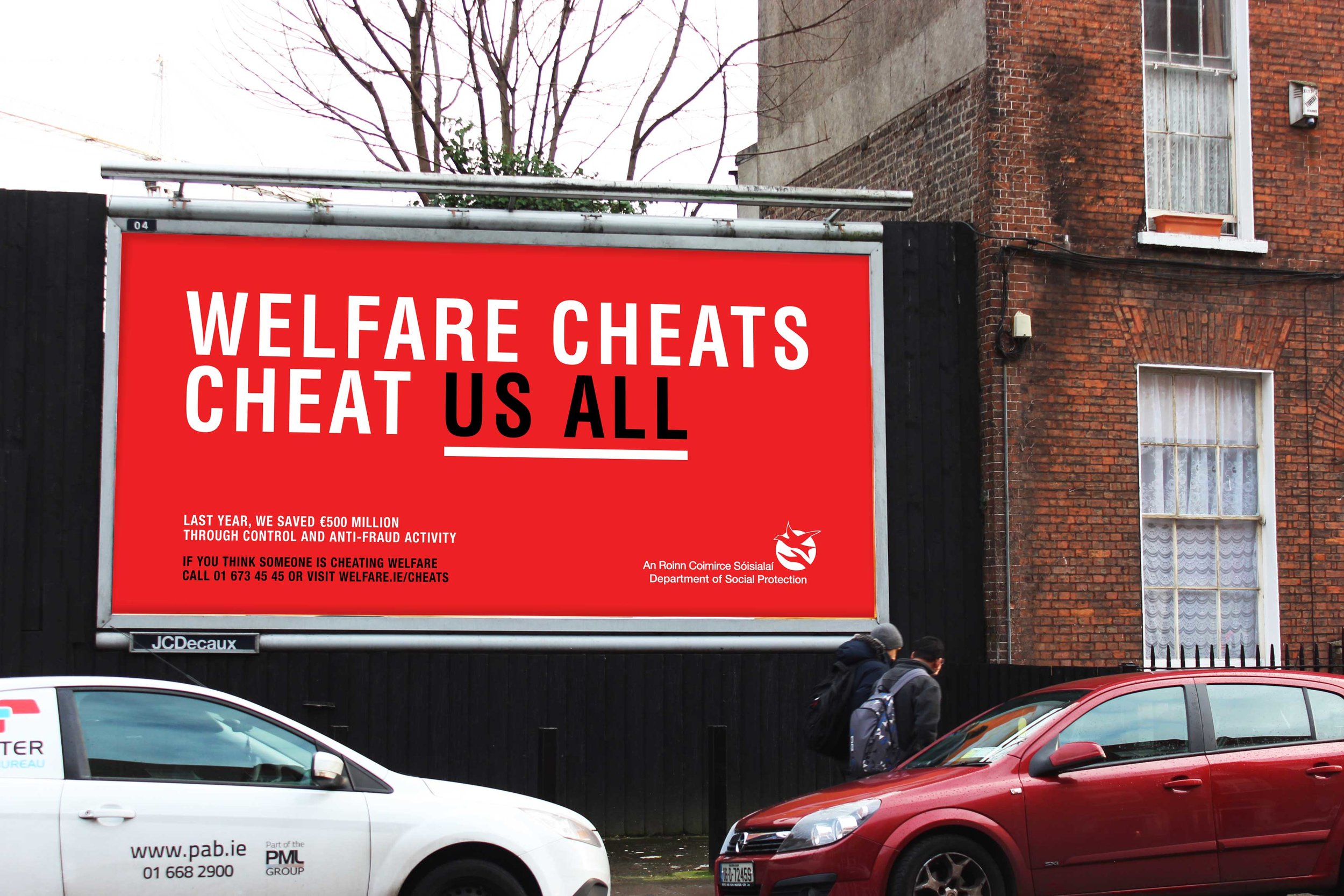

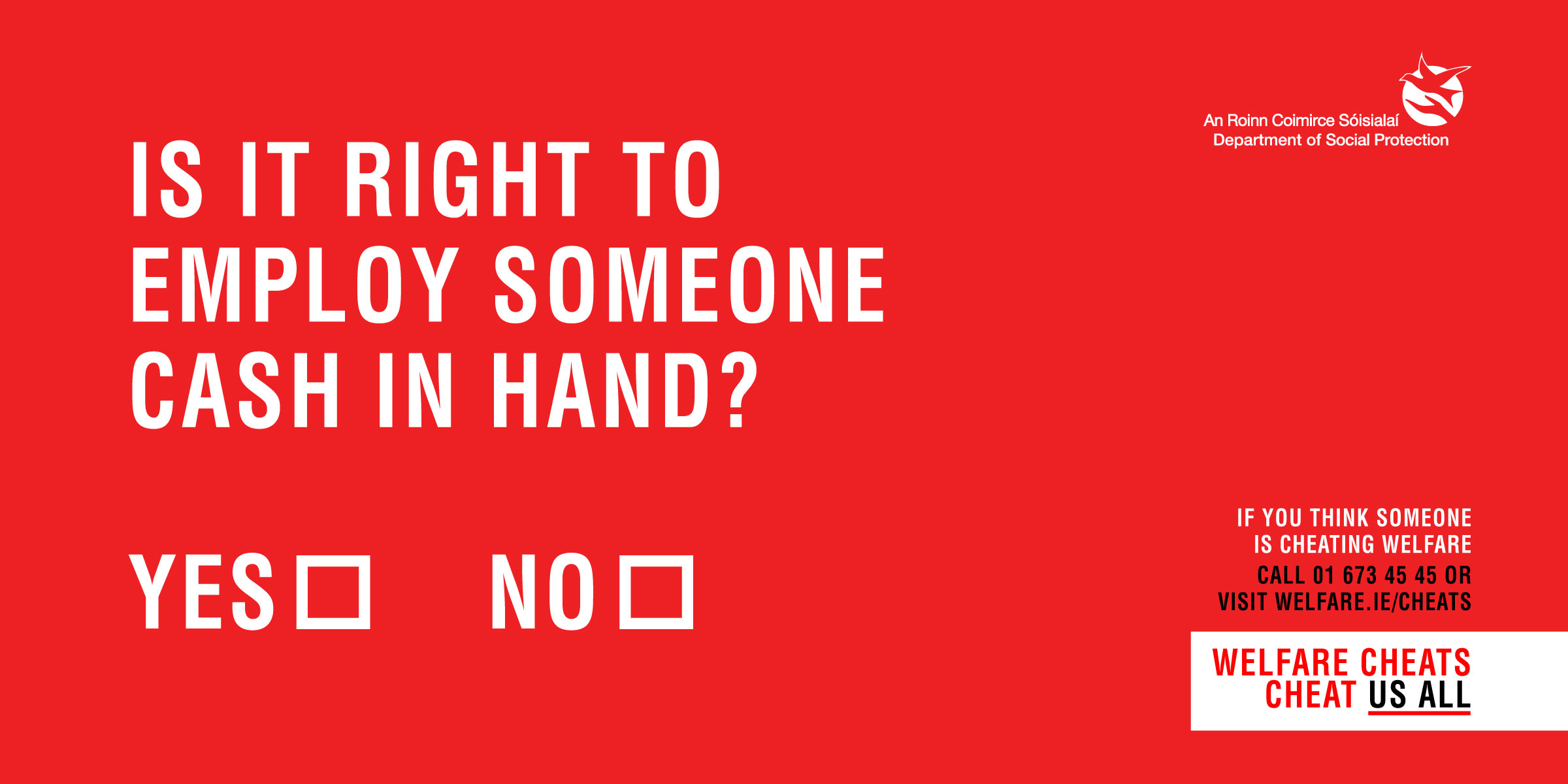

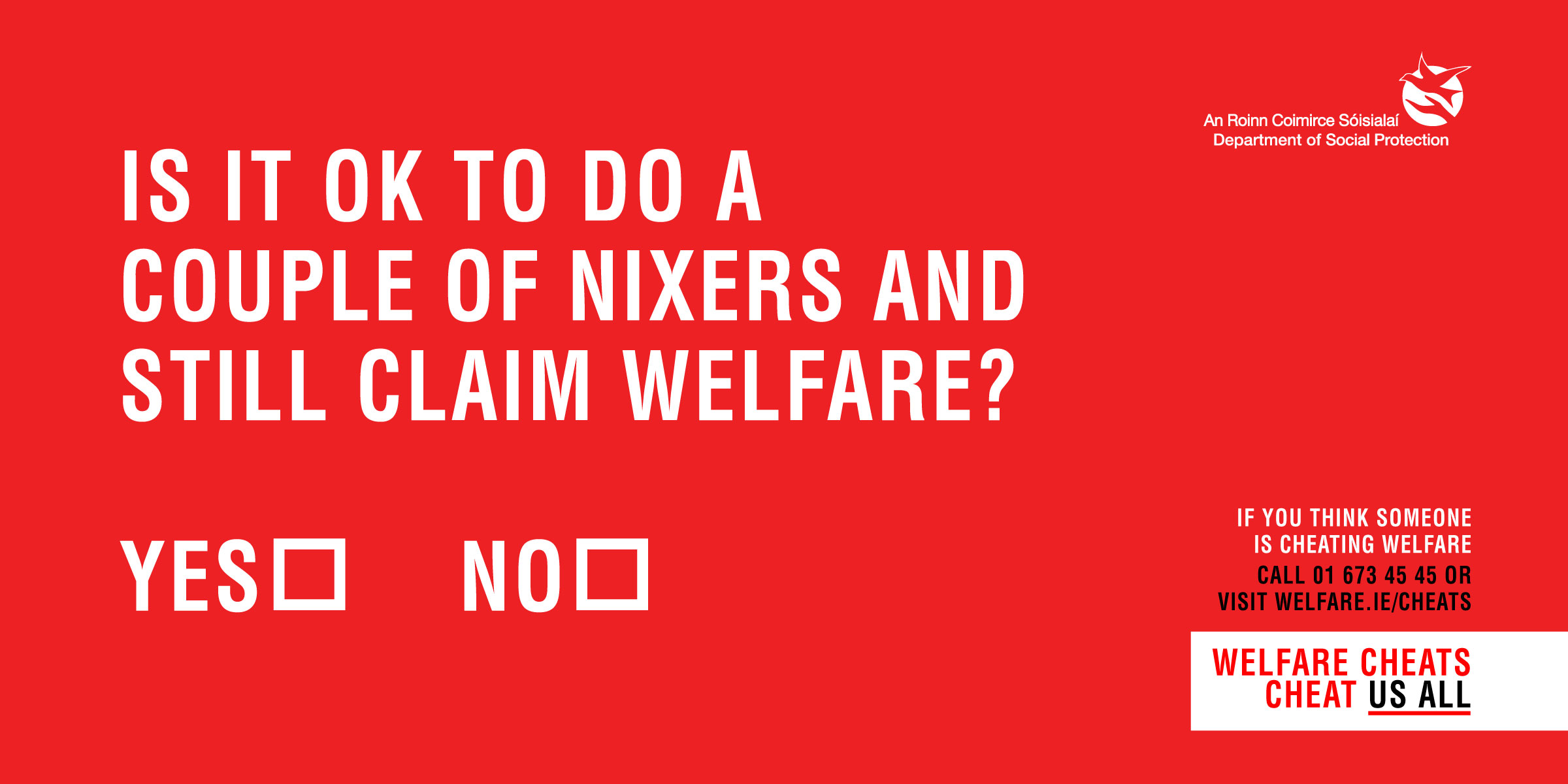
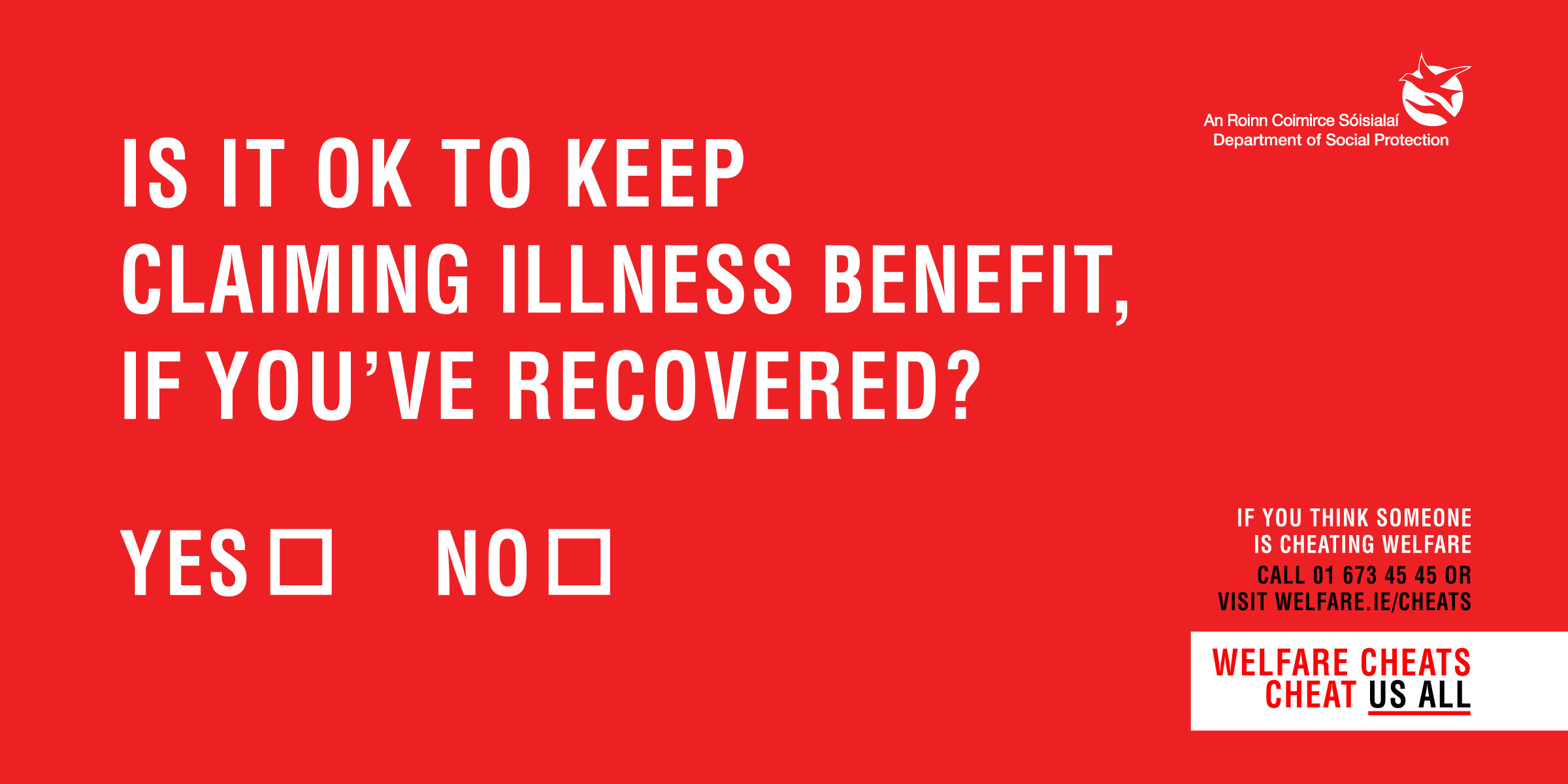
Reports of welfare cheats doubled in the first week, social media went into meltdown and all main publications and news outlets spread the word. The campaign was a huge success and got people debating the rights and wrongs of cheating the welfare.

Ding
Ding
Helping dad help his pumpkin
Ding, the worlds leading mobile top-up provider asked us to create a social ad targeting Jamaican fathers living and working in America. These men moved to America to support their families back home. Sending mobile top-up to loved ones is a great way to help, it gives them access to the internet, credit for emergencies and keeps families connected. But nothing drives this home, like Dad and his little pumpkin having a lovely moment over skype :)

